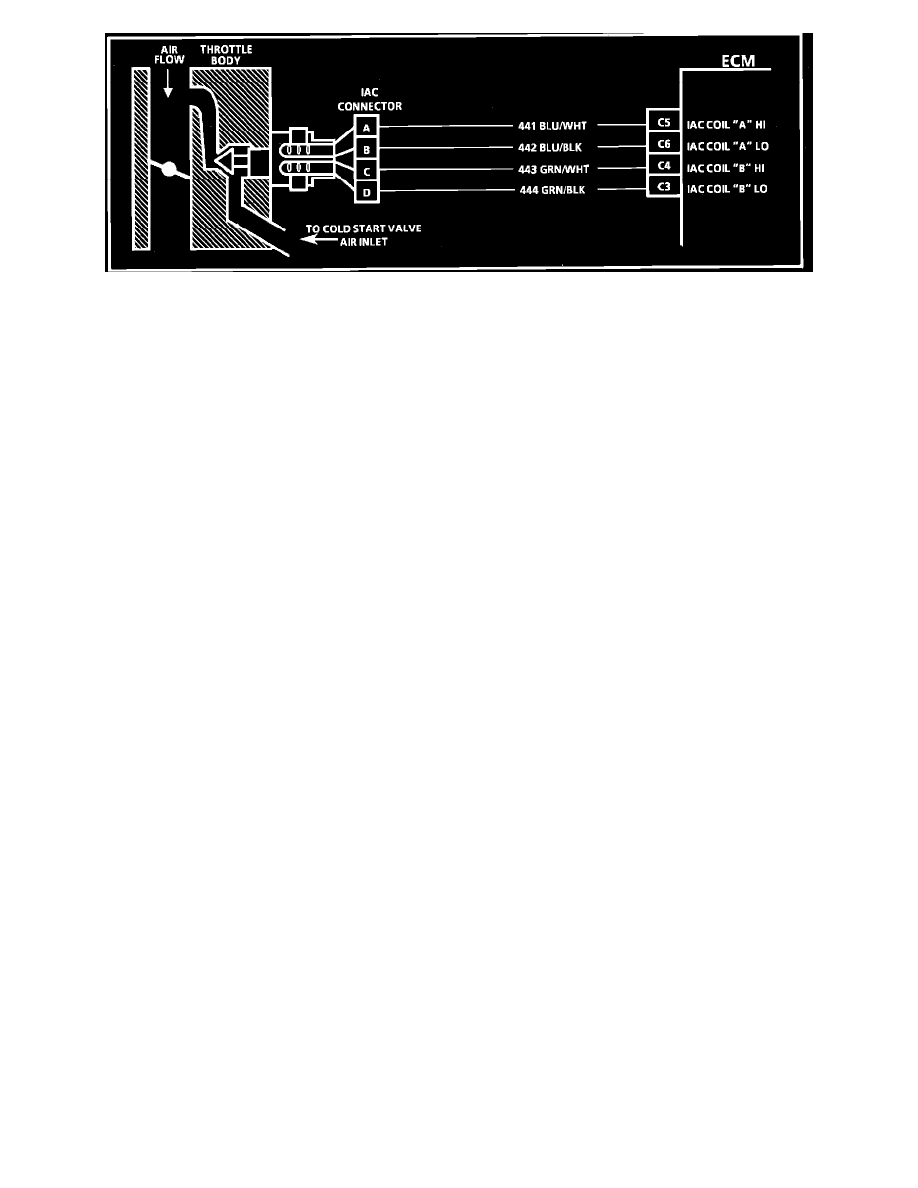Firebird V8-305 5.0L VIN F FI (1987)

Wiring Diagram for Chart C-2C Idle Air Control
Circuit Description:
The ECM will control engine idle speed by moving the IAC valve to control air flow around the throttle plate. It does this by sending voltage pulses to
the proper motor winding for each IAC motor. This will cause the motor shaft and valve to move in or out of the motor a given distance for each pulse
received. ECM pulses are referred to as "counts". To increase idle speed - ECM will send enough counts to retract the IAC valve and allow more air to
flow through the idle air passage and bypass the throttle plate until idle speed reaches the proper RPM. This will increase the ECM counts. To decrease
idle speed - ECM will send enough counts to extend the IAC valve and reduce air now through the idle passage around the throttle plate. This will reduce
the ECM counts. Each time the engine is started and then the ignition is "OFF" the ECM will reset the IAC valve. This is done by sending enough counts
to seat the valve. The fully seated valve is the ECM reference zero. A given number of counts are then issued to open the valve, and normal ECM control
of IAC will begin from this point. The number of counts are then calculated by the ECM. This is how the ECM knows what the motor position is for a
given idle speed. The ECM uses the following information to control idle speed.
Battery voltage
Engine Speed
Coolant Temperature
A/C clutch signal
Throttle Position Sensor
Don't apply battery voltage across the IAC motor terminals. It will permanently damage the IAC motor windings.
Test Description: Numbers below refer to circled numbers on the diagnostic chart.
1.
Continue with test even if engine will not idle. If idle is too low, "Scan" will display 80 or more counts, or steps. If idle is high it will read "O"
counts. Occasionally an erratic or unstable idle may occur. Engine speed may vary 200 rpm or more up and down. Disconnect IAC. If the condition
is unchanged, the IAC is not at fault. If there is a system problem, proceed to diagnostic aids below.
2.
When the engine was stopped, the IAC valve retracted (more air) to a fixed "Park" position for increased air flow and idle speed during the next
engine start. A "Scan" will display 140 or more counts.
3.
Be sure to disconnect the IAC valve prior to this test. The test light will confirm the ECM signals by a steady or flashing light on all circuits.
4.
There is a remote possibility that one of the CKTs is shorted to voltage which would have been indicated by a steady light. Disconnect ECM and
turn the ignition "ON" and probe terminals to check for this condition.
Diagnostic Aids:
Engine idle speed can be adversely affected by the following:
Park/Neutral Switch - If ECM thinks the car is always in neutral, then idle will not be controlled to the specified rpm when in drive range.
Leaking injector(s) will cause fuel imbalance and poor idle quality due to excess fuel. See CHART A-7.
Vacuum or crankcase leaks can affect idle.
When the throttle shaft or throttle position sensor is binding or sticking in an open throttle position, the ECM does not know if the vehicle has
stopped and does not control idle.
Check AIR management system for intermittent air to ports while in "Closed Loop". In addition to electrical control of EGR, be sure to examine the
EGR valve for proper seating.
Faulty battery cables can result in voltage variations. The ECM will try to compensate, which results in erratic idle speeds.
The ECM will compensate for A/C compressor clutch loads. Loss of this signal would be most apparent in neutral.
